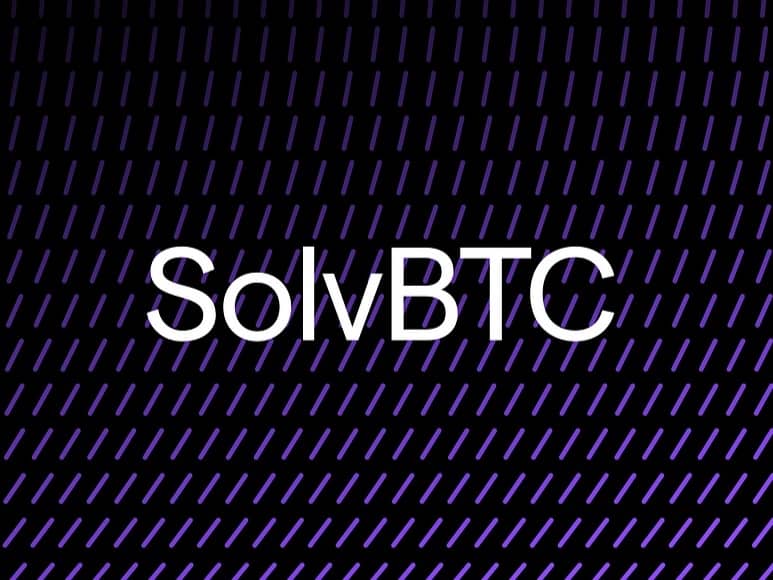订阅 wiki
Share wiki
Bookmark
SolvBTC
SolvBTC
SolvBTC是由Solv Protocol开发的流动性质押代币,旨在将比特币集成到去中心化金融(DeFi)生态系统中。SolvBTC利用Solv Protocol的质押抽象层(SAL),旨在释放比特币资产的流动性,并为持有者提供获得收益的机会。SolvBTC背后的协议已经过Quantstamp、Certik和SlowMist等安全公司的审计。Solv Protocol是SolvBTC的开发者,得到了包括Binance Labs、Blockchain Capital和Laser Digital在内的投资者的支持。[1] [2] [3]
概述
尽管比特币是市值最大的加密货币,但与以太坊等其他网络上的资产相比,很大一部分比特币资产在收益产生方面仍未得到充分利用,以太坊拥有更发达的质押基础设施。SolvBTC由Solv Protocol开发,旨在通过为比特币提供更积极参与DeFi的机制,通过质押服务及其持有者的流动性解决方案来解决这个问题。[1] [4]
SolvBTC
SolvBTC充当通用的比特币储备代币,旨在弥合闲置比特币和DeFi生态系统之间的差距。它与比特币保持1:1的挂钩,可以通过存入原生比特币或各种包装的比特币资产来铸造。这种设计允许持有者无缝地将其资产跨不同区块链生态系统转移,从而显著提高比特币在DeFi应用中的效用。SolvBTC为比特币持有者提供无缝访问跨链DeFi机会和收益生成。[5] [2]
储备系统
为了管理支持SolvBTC的底层资产,Solv Protocol采用分层储备系统。该系统根据其安全性和流动性特征对储备资产进行分类:
- 核心储备资产:这些资产构成了SolvBTC储备的最安全和流动性基础。示例包括原生比特币(BTC)、币安的包装比特币(BTCB)和Base的包装比特币(cbBTC)。选择这些资产是因为它们的稳定性和高流动性,为SolvBTC持有量提供了强大的支持。
- 隔离储备资产:此类别包括WBTC、BTC.b(Avalanche)和M-BTC(Merlin)等资产。这些资产可能具有更高的风险,例如潜在的脱钩或特定于其原生生态系统的流动性约束。Solv Protocol使用分层方法和储备证明系统来确保透明度并限制对这些资产的风险敞口。
该分层系统旨在让用户对SolvBTC持有量的支持充满信心,同时管理与各种包装比特币资产相关的风险。[5]
跨链功能
SolvBTC的一个关键特性是它能够在包括以太坊、BNB Chain、Avalanche、Arbitrum、Base、BOB、Mantle、Merlin等多个区块链生态系统中运行。这种跨链能力是通过与Chainlink的跨链互操作性协议(CCIP)和Free.tech等互操作性协议的合作来实现的。这些集成实现了SolvBTC代币在链之间的安全高效转移,确保了流畅的流动性流动,并最大限度地减少了参与跨不同平台的DeFi用户的交易成本和延迟。[5]
质押抽象层(SAL)
质押抽象层(SAL)是Solv Protocol基础设施的核心组件,它通过SolvBTC实现比特币质押。SAL为比特币质押提供了一个统一的标准,允许SolvBTC持有者访问各种质押产品和策略并从中获得收益。它标准化并增强了比特币质押生态系统内的互操作性,使其对参与者更具可访问性。SAL支持各种基于比特币的质押资产,例如xSolvBTC、SolvBTC.ENA和SolvBTC.Core,每种资产代表不同的收益策略或与特定区块链网络的集成。[4] [2]
收益机会
通过SAL及其集成,SolvBTC持有者可以获得以下几个收益来源:
- 重新质押:SolvBTC可用于为权益证明(PoS)网络的安全做出贡献,从而获得奖励。
- 验证者奖励:参与运营验证者节点可以生成原生代币奖励。
- DeFi收益:SolvBTC及其流动性质押衍生品(LST)可用于各种去中心化金融协议中,用于借贷、流动性提供和其他收益生成活动。
SolvBTC为比特币持有者提供了一个结构化的途径,让他们参与去中心化金融并获得收益,同时保持流动性并接触比特币的价值。[5] [2]
发现错误了吗?
